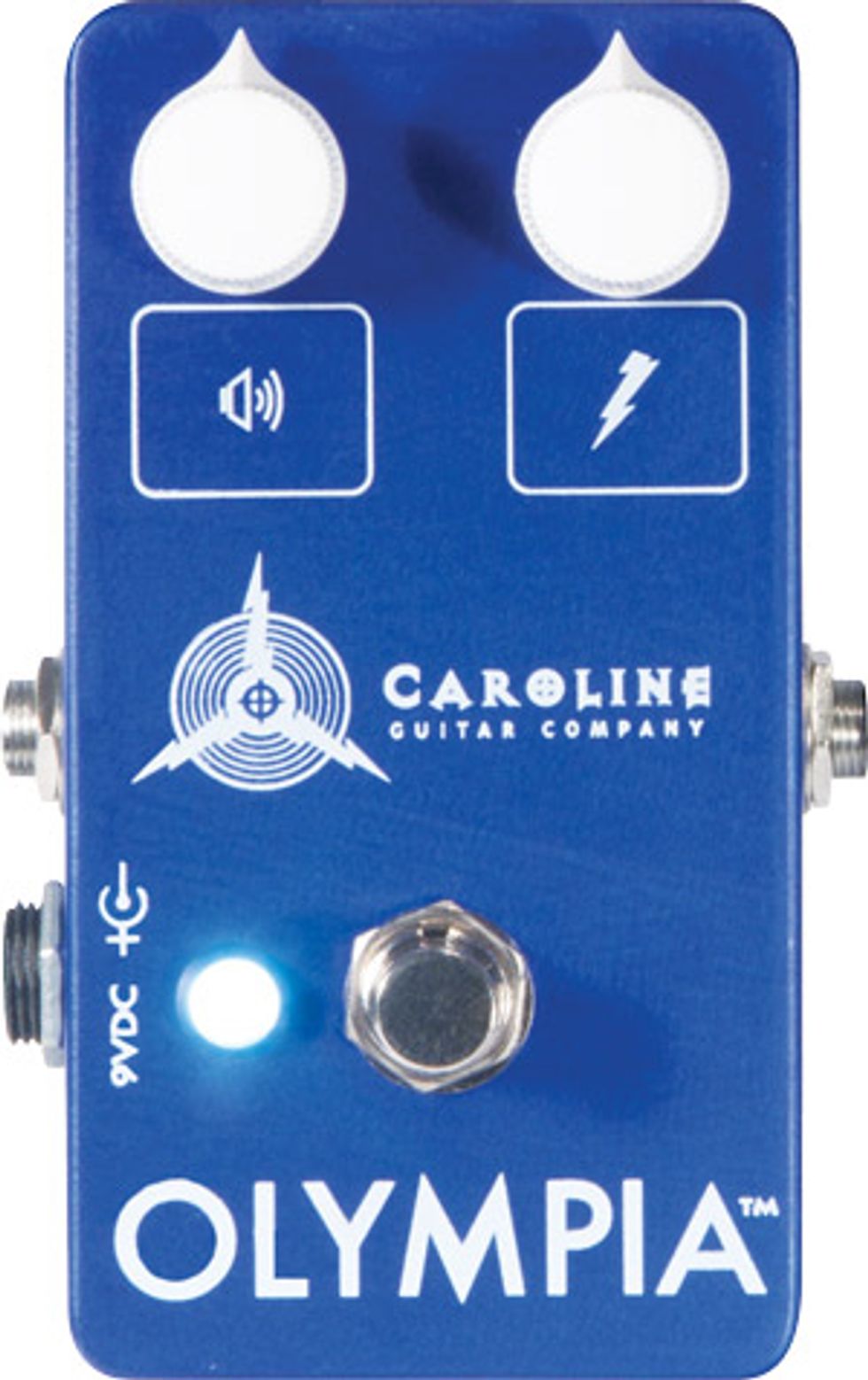
In the fuzz realm, there’s an allure to the circuits of the ’70s that attracts a very obsessive crowd. They prowl for that perfect, sinewy, buzz-saw sustain that’s graced the work of everyone from Pink Floyd to the Isley Brothers—the tones of silicon Fuzz Faces and the legendary “triangle” and “ram’s head” versions of the Electro-Harmonix Big Muff. These pedals and their counterparts regained popularity in the ’90s when a new breed of guitar misfits from Mudhoney to Sonic Youth and Dinosaur Jr. reclaimed the tone for their own, and the resurgence in popularity sent price tags for what were once junk-shop relics sky high. Given the hundreds of dollars those originals now fetch, many fuzz-cult devotees have given up the Craigslist and eBay runaround and turned to boutique gear for their fuzz fixes.
For some such characters, the Caroline Guitar Company may have the answer. After achieving success with its homage to op-amp excellence, the Wave Cannon OD/Fuzz, the Columbia, South Carolina, company set its sights on a classic transistorbased fuzz. And as the name suggests to fans of the Melvins, Nirvana, and other fuzz-freak bands, the Olympia traces a line back through the Pacific Northwest of the ’90s with filthy grace. With some help from the Kickstarter.com fundraising platform, Caroline Guitar Co. far exceeded their monetary goal to push the Olympia into the testing and production phases. Now available internationally, this stompbox touts a wide breadth of color that’s certain to please the pickiest old-school fuzz fans.
Blues for the Sun
The Olympia’s fuzzed-out chaos is managed
through manipulation of volume (indicated
by a speaker symbol) and gain (a bolt from
Zeus, of course). The knobs are placed perfectly
for quick foot-control during a gig—
tight, but not too tight, and right up at the
top of the pedal.
Within the blueberry-colored enclosure you’ll find a lesson in compact design. No space is wasted in accommodating the 9V battery, 3DPT true-bypass setup, jacks, and circuit board. Shielded jacks protect 1/4" input and output cables from interference, and should you choose to go with a battery over an adapter, it will rest securely below the footswitch with little to no movement. On the whole, the Olympia feels tough and ready for real gigging and a lifetime on a working player’s pedalboard.
Amber Waves of Gain
With both knobs at high noon, a
Stratocaster plugged into its input, and
a 50-watt Bassman stocked with four
Celestion Vintage 30s at the other end of the
line, the Olympia growls with grungy lead
tones. Background noise, however, is virtually—
and most impressively—nonexistent.
Power chords at these settings had the Bassman positively booming and burning (figuratively, of course). If you’re looking for a more aggressive J. Mascis or Mudhoney tone, you’ll want to kick gain up to 2 or 3 o’clock. At this level, the Olympia delivers whiplash lead tones with a heap of bass presence, a sweet, sharp high end, and a responsiveness that coaxed nuances from both sides of the spectrum, depending on picking intensity. It’s clearer—more transparent even—than the suffocated, almost synth-like output that Big Muff-based pedals sometimes have.
With a Les Paul driving the works, you can delve further into woolly regions like those on Sabbath Bloody Sabbath. Maxing the gain gives you those aggressive Iommi tones without sacrificing picking dynamics, while backing off the gain increases the detail in note-to-note interplay and gives you the bark and bite you associate with Jimmy Page’s more stinging moments form the first four Zep LPs. You may want to kick up the volume a tad if you’re sticking with humbuckers, as the difference between a clean signal from a hot humbucker and the Olympia with everything at noon is less than pronounced. Even so, there’s more than enough headroom to help you rise to bombastic levels when you kick the pedal on.
Ratings
Pros:
wide range of fuzz tones. Great harmonic clarity.
Cons:
may not have enough hair for fans of extreme muff
and Fuzz Face tones.
Tones:
Ease of Use:
Build:
Value:
Street:
$145
Company
carolineguitar.com
If you’re yearning for a more ethereal lead tone, the Olympia also works great with a high-headroom, open-back amp like a Fender Twin Reverb. In these airier environs, the Olympia’s lower frequencies blend exceptionally well with the brighter tones— especially in loud, live settings. Against a fuzz-saturated bass and a second overdriven guitar, the Olympia cut without the aid of a separate overdrive. And with the gain raised near full mast, you can achieve the opulent, round, and raging sound of a Sovtek-built Big Muff without giving up any clarity. Stack some reverb on top of this roar, and you’ll be deep in shoegazing bliss—teetering on the edge of outlandish feedback and squealing harmonic overtones, especially with single-coil in the blend.
The Verdict
Searching for the right fuzz can lead to a lot
of pedals that do one thing really well. But
the Olympia provides both authentic Muff
and Fuzz Face tones. Even better, it actually
has more clarity and broader harmonic content
than what you’ll find in many Muff and
Fuzz Face specimens, which means it can
cover a lot of ground and suit multitudinous
combinations of guitar and amplifier. The
fact that Caroline Guitar Co. has managed
to build a classic-sounding fuzz that excels in
terms of fidelity and versatility at a reasonable
price, suggests the Olympia is bound for
more than a few fuzz freaks’ short lists.










![Rig Rundown: Russian Circles’ Mike Sullivan [2025]](https://www.premierguitar.com/media-library/youtube.jpg?id=62303631&width=1245&height=700&quality=70&coordinates=0%2C0%2C0%2C0)








